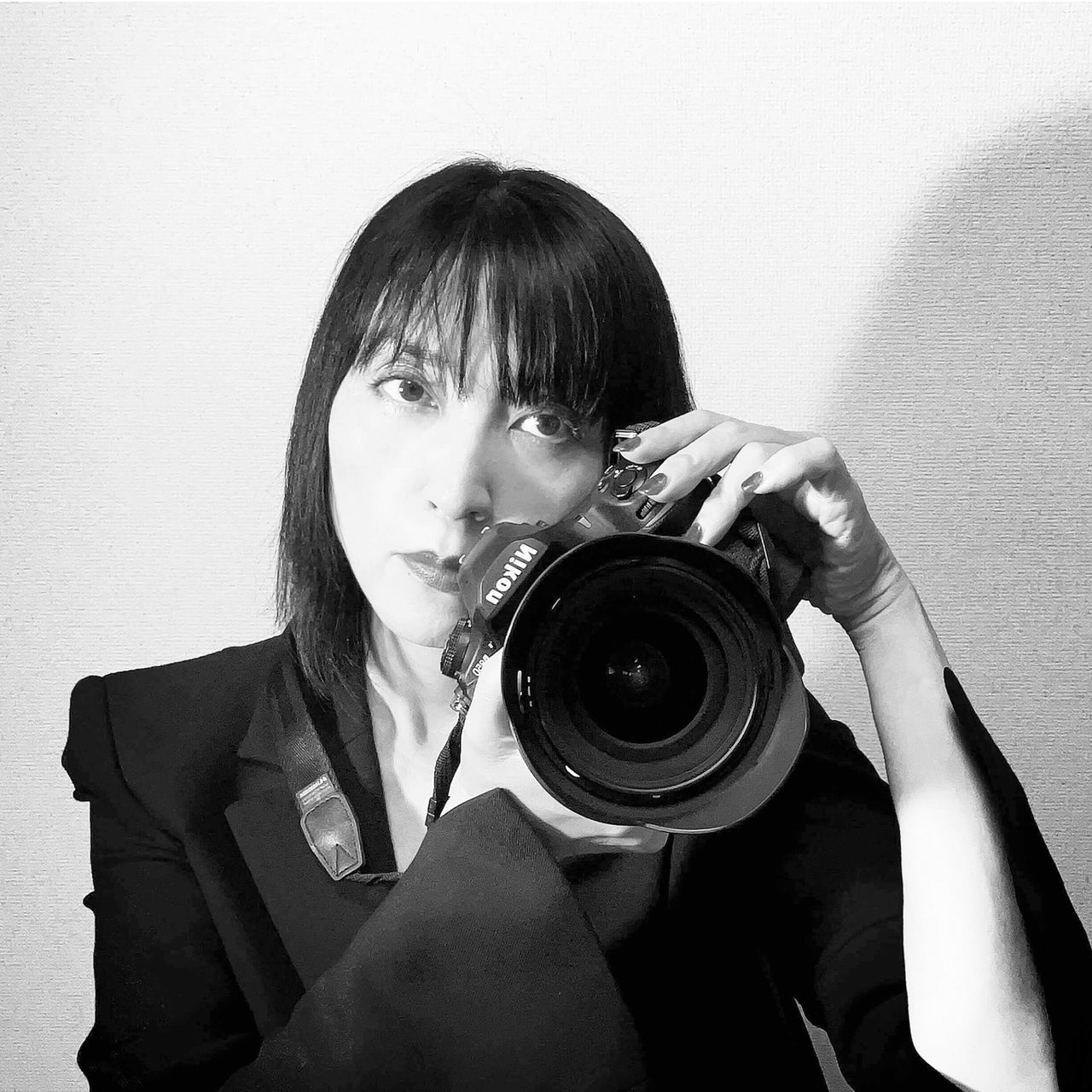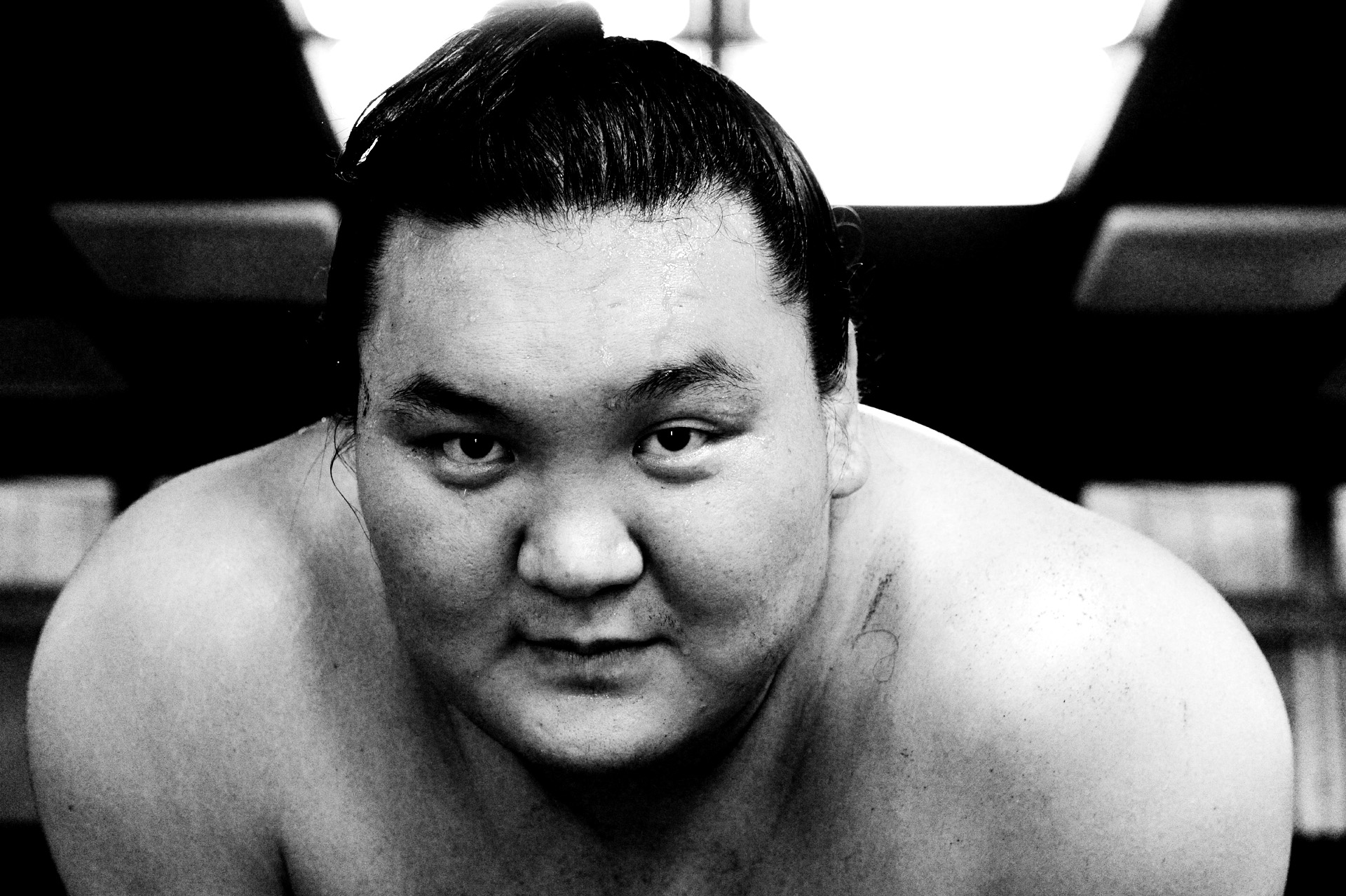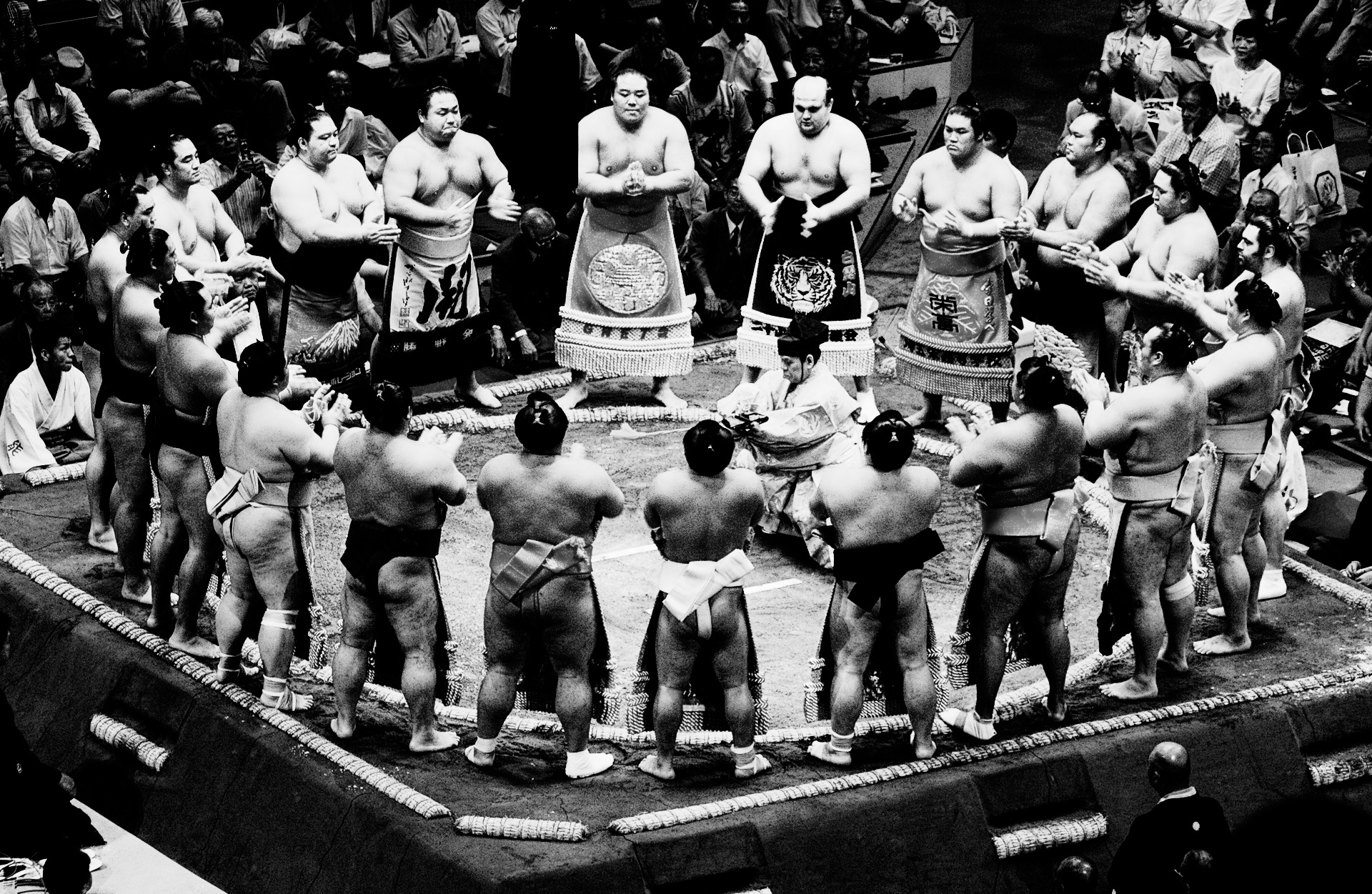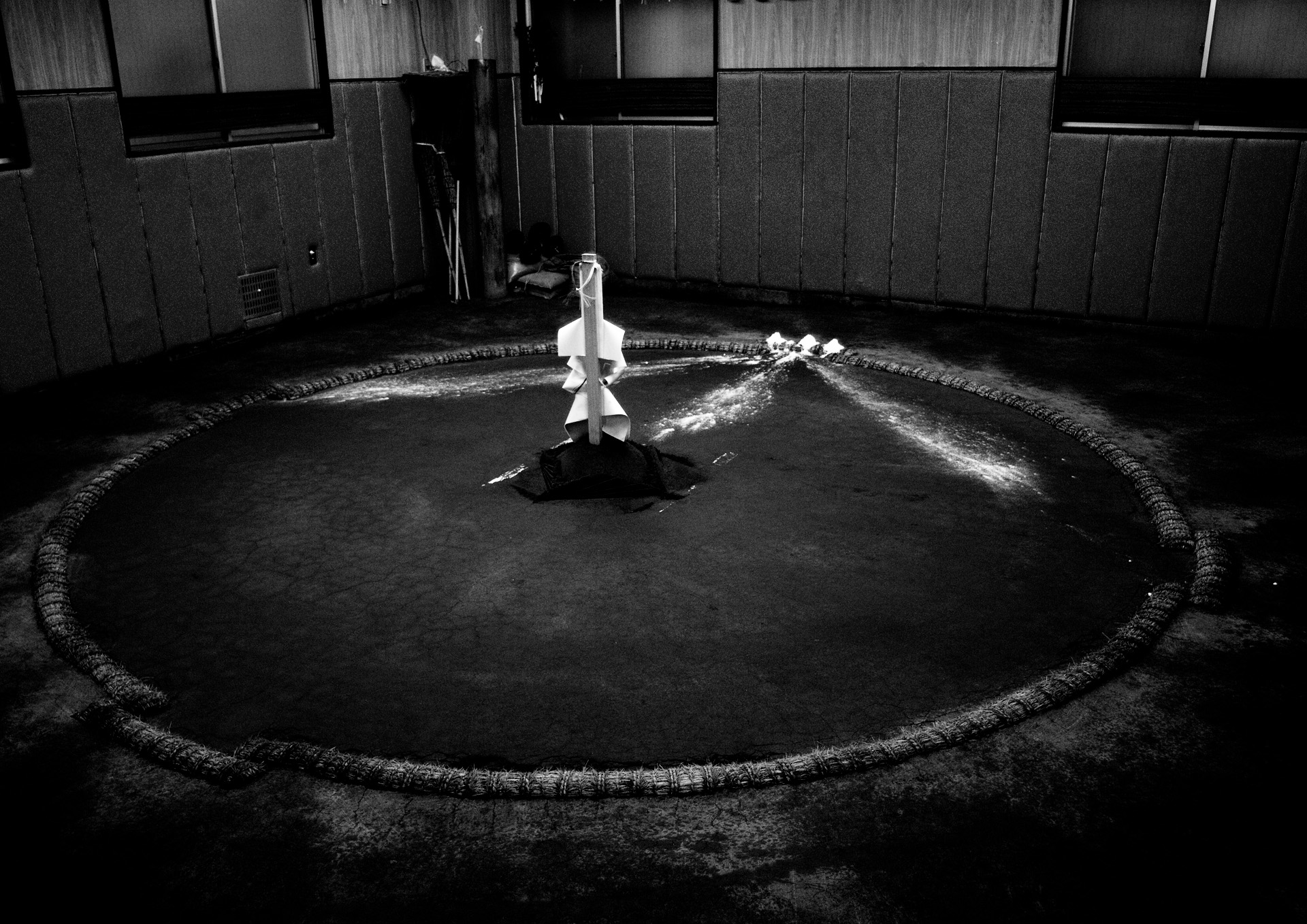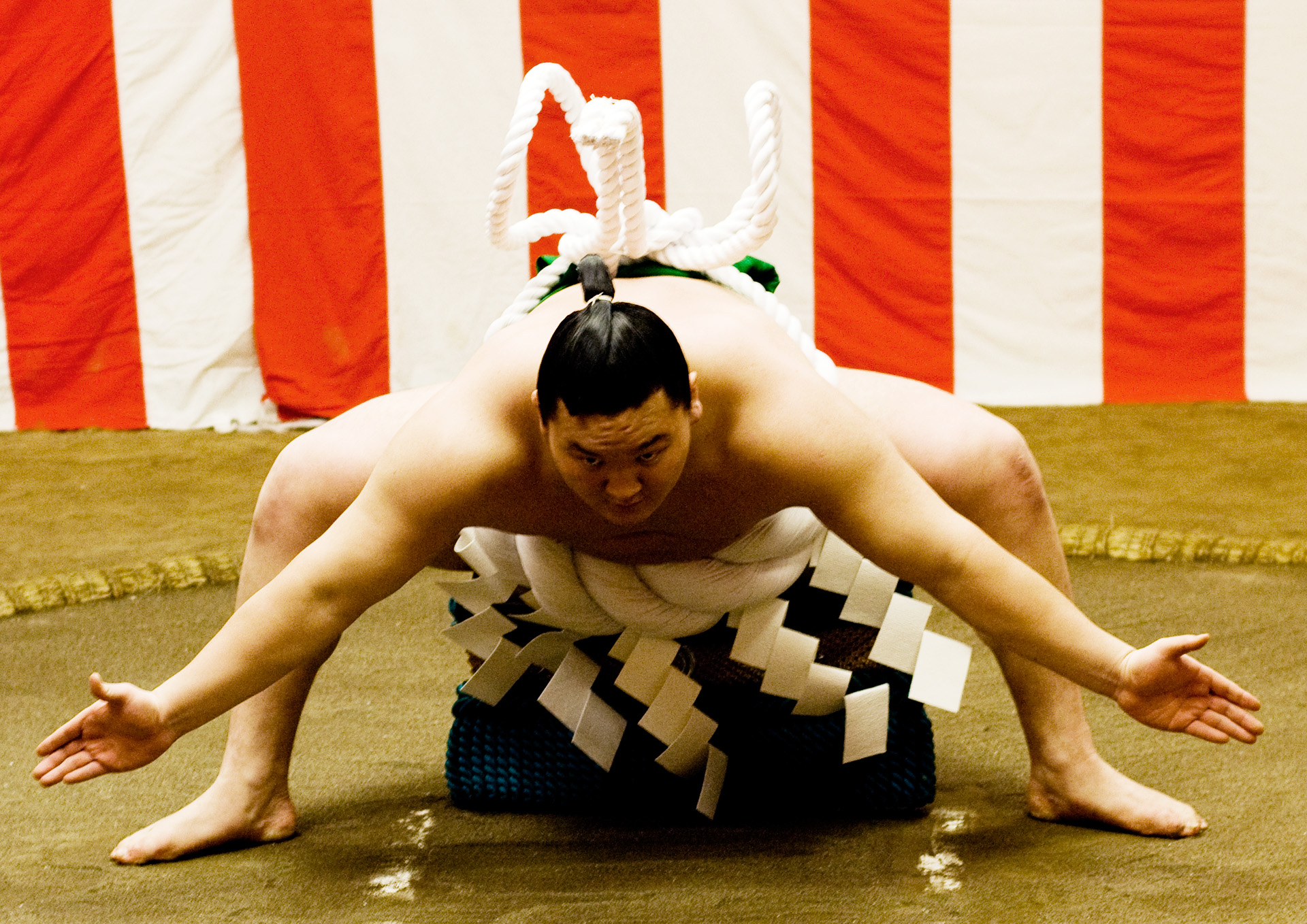Photography for a conversation with its creator
Hidemi Ogata was born and raised in Kumamoto Prefecture to an architect father and a mother who ran a dressmaking shop. She was full of creative enthusiasm from an early age, and showed such talent that she was selected as a special prize winner in a nationwide painting competition when she was in elementary school.
In her adolescence, she was drawn to punk rock and glam rock such as The Clash, The Stranglers, and David Bowie. In an interview, David Bowie talked about Yukio Mishima, saying that she had read all of Mishima's works, even though she was "not a literary girl." As she became absorbed not only in their music but also in their ideas, she became interested in photographs of musicians.
"I felt that photography was a way to face these musicians on an equal footing and have a dialogue with them, rather than a way to realise my own creativity."
At that time, Ogata was involved in a traffic accident and suffered serious injuries that left her near death. In an attempt to cheer her up, her mother sent a rock magazine to her hospital room, where she found photos of photographers such as Masayoshi Sukita and Penny Smith of The Clash, who were credited for photographing David Bowie. She felt so excited that her blood boiled, even as she faced death, that she realized that even if she was Japanese and a woman, she could compete on an equal footing with these creators through photography.
After graduating from high school, he moved to Tokyo and studied under photographer Kaoru Ijima. He then went to New York, USA, where he developed friendships with many artists, including Andy Warhol, and took portraits of the black people he met at the legendary club, Paradise Garage. After returning to Japan, he made his debut with a photo book by Blankey Jet City in 1995, and has since been active in the fashion and advertising fields, mainly taking portraits of artists such as Tadanori Yokoo, Sayoko Yamaguchi, and Richard Stark (co-founder of Chrome Hearts).
While he has shot many celebrities both in Japan and abroad, he also took part in a shoot in Israel and Palestine with Kazuhiro Sekino, head pastor of the Lutheran Church of Tokyo, in 2018. He conveys a strong message about the dignity of human existence through his photographic expression, especially portraits.
The miracle of meeting Hakuho
"Up until now, I have followed my intuition and met my subjects. They are people I was destined to meet. I believe in the miracle of encounters."
"Sumo is photogenic. I decided to photograph the wrestlers and create a work of art," he thought intuitively, and in April 2007, without knowing anything about sumo, he went to watch practice at Miyagino stable on the recommendation of a sumo fan friend. After practice ended and the other wrestlers were leaving, Hakuho, who was an ozeki at the time, called out to Ogata.
"When I first met Hakuho, my impression was that he was a beautiful sumo wrestler with pink skin and a warm glow. A friend who loves sumo had told me his name, but I couldn't match his face to his name. Still, I knew it was him right away because of the aura he exuded."
Since then, Ogata says it has been her personal joy to capture images of the growing light of the sumo wrestlers, such as the moment he defeated Asashoryu to become Yokozuna, his first rope-tying ceremony, and the dedication ring-enter at Meiji Shrine. But it's not just the light that she captures.
A shadow that testifies to the preciousness of existence
When scandals in the sumo world were revealed one after another, he supported the world alone as a yokozuna, continuing to train as usual, even as criticism continued and empty seats were noticeable at tournaments. At the 2010 Kyushu Grand Sumo Tournament, there were high hopes that he would break Futabayama's record of 69 consecutive wins. But he was defeated by Kisenosato, the top maegashira, and was unable to break the record, which he felt as he felt regret and loneliness. He has also looked into the dark side.
The day after his defeat, while no one, including the press, had come to his room, Ogata and his master ate chanko together. Afterwards, the two spent time alone in the yokozuna's room, where Hakuho apparently confided in Ogata about the loneliness and suffering of being a yokozuna. There, we also see the face of a young man.
"His smile outside the ring, his gentle personality without being arrogant and loved by all. I believe he will go down in history not only for his record of 63 consecutive wins, but also for his humanity. I would be very happy if, by capturing the eternal image of Yokozuna Hakuho in this photograph, his energy, which makes people think he was a god, can be conveyed to many people around the world."
When Ogata was 18 years old and had recovered from a near-death accident, he asked a famous fortune teller in his hometown of Kumamoto if he could become a photographer, and was told:
"If you are grateful to the shadow, you can become one."
His series "My Fabulous Friends" was shot in a condominium with only one light, depicting black people he met at a club in New York. His ongoing personal photo session "Only One by Hidemi Ogata" is a series of photographs. His subjects are not legendary icons, but ordinary people. "When photographing, one is inevitably conscious of the light, but if one is grateful for the shadows, one can transcend both poles and take photographs from an absolute perspective," Ogata says. In the resulting voluminous shadows, the figures of ordinary people emerge like sturdy buildings that can withstand the winds and snows of time.
"The body will one day perish, but energy will remain forever. Human existence is art."
What Ogata captures is the eternity of human beings, who exist for only a moment. His appearance as if he is about to let out a roar right after practice, his expression contorted as he makes his first rope-strike, and the sense of relief he shows when his parents come from Mongolia.
A moment in the life of Hakuho, a man who has never been made public in the world of sumo, which has developed as a religious ritual to pray for peace throughout the country. There are areas that cannot be entered when facing those who live in the world of competition. This moment in which he respectfully enters these shadows is a human documentary, yet is filled with the splendor of fiction.
What we see in a moment of the 69th Yokozuna Hakuho is also the preciousness of human existence.
On the photo exhibition "Yokozuna Hakuho"
The photographs on display at this exhibition are taken from 2007, when he was promoted to Yokozuna, until 2010, when he recorded 63 consecutive wins. This marks the period when he went from a time when he was completely absorbed in sumo wrestling to the time when he began to work towards becoming a Yokozuna who had both mind, technique and body. Looking back at each photograph, the passion he felt at the time is brought back to life.
Hidemi Ogata is a person who, like me, is sincere and passionate about his work. The works on display at this photo exhibition were born from the clash of two people with the same aspirations. I feel that they depict an image of "Hakuho" that you have never seen before.
Please come and see for yourself the image of the "eternal" Yokozuna Hakuho, captured by photographer Ogata Hidemi.
13th generation Sho Miyagino (69th generation Hakuho)



